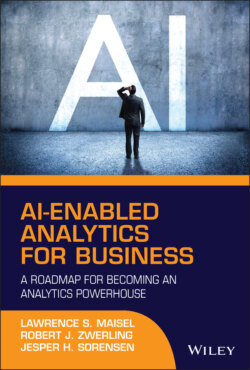Читать книгу AI-Enabled Analytics for Business - Lawrence S. Maisel - Страница 31
NOT NOW
ОглавлениеA particular affliction of many finance departments is to delay starting analytics because finance struggles with basic financial reporting and month-end close. The thinking is that if these rudimentary tasks cannot get done timely, accurately, and with accessibility to support operations, then the very function of finance is questionable. However, if the financial planning and analysis (FP&A) group of the finance organization is not ushering in AI and analytics to be a hub of predictive intelligence for planning, then it provides no modern value for business performance improvement.
As such, FP&A can and must leap-frog to analytics to both solve current reporting and advance to data-driven decisions, or it will be side-lined to routine tasks. In this configuration, the consequence is that finance is nothing more than a bean counter. The excuse that basic reporting comes before analytics or that difficulty with basic reporting precludes analytics is just that—an excuse. Finance can solve standard reporting and accommodate analytics using modern analytics and data visualization tools to both automate reporting and deliver analytics insights.
An analogy to this approach can be found in Third World countries in the 1990s and early 2000s that had poor telecom infrastructure. Instead of spending limited capital to upgrade and expand landlines, the jump was made to new cellular technology. It was faster and lower cost and shot them forward into the twenty-first century.
Using analytics tools to replace spreadsheet reports is a similar approach, as it accommodates the foundational business reporting; then, once the data is in the analytics tool, reports leap-frog to reveal added insights that can be found from the data. This approach is not limited to finance: all areas of the business that are awash in spreadsheets can use analytics tools in the same manner.
